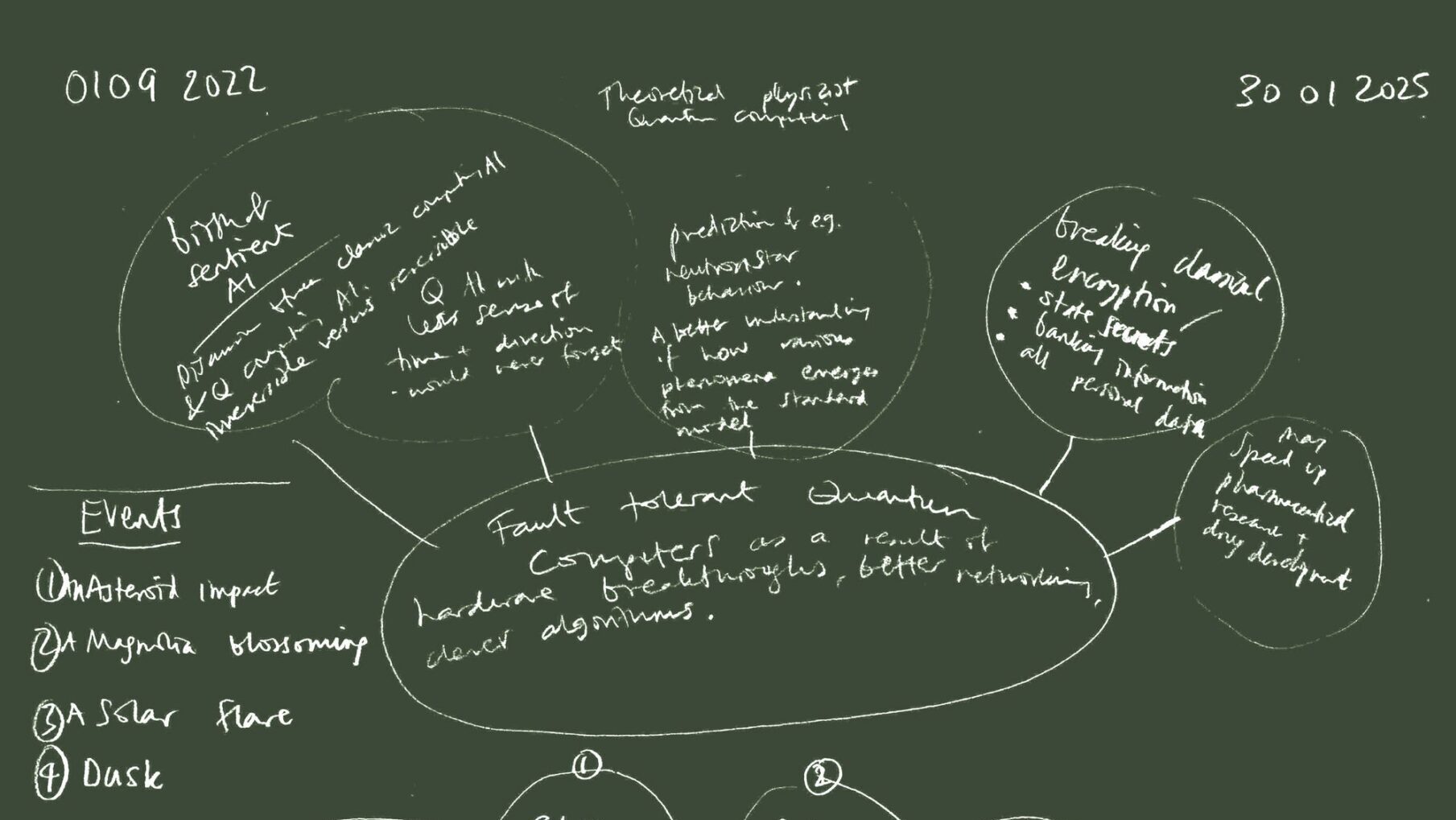Scientific Dreaming is a project aimed at unlocking the unconscious imagination of scientists, enabling them to envisage positive futures based on hypothetical scientific advances while highlighting potential risks. After her residency at CERN, Suzanne Treister returned to the Laboratory to conduct writing workshops with physicists and engineers. Each session began with a blank A3 sheet, where both the artist and the scientist drew diagrams in response to prompts such as dates, names of characters, their occupations and dreams. As the diagrams evolved, Treister encouraged them to imagine a potential scientific breakthrough and its possible impacts in this world and beyond. The resulting diagrams formed the basis for science-fiction stories written by the scientists. Narratives of the nature of dark matter, limitless clean energy with fusion power, and a theory of everything in physics emerged, as well as the flip side of those left behind when humanity leaps forward.
-
 Photo: Claudia Marcelloni/CERN
Photo: Claudia Marcelloni/CERNSuzanne Treister
GB
Suzanne Treister is an artist based in London and the French Pyrennes. In the 1990s, she became a pioneer of new media art. Using a variety of media, her work has engaged with eccentric narratives and unconventional bodies of research to reveal structures that bind power, identity and knowledge. Often spanning several years, her projects comprise fantastic reinterpretations of given taxonomies and histories that examine the existence of hidden forces at work in the world.
Credits
Suzanne Treister received the Arts at CERN’s Collide Award in 2018. Since her residency at CERN, she has conducted several projects with the scientific community: The Holographic Universe Theory Of Art History (2018) and Scientific Dreaming (2022), which was undertaken during a residency at La Becque in Vevey, Switzerland, curated by Mónica Bello.
Scientific Dreaming includes the participation of scientists and engineers Maria Elena Angoletta; Diego Blas; Taylor Carnahan; Denis Oliveira Damazio; Michael Doser; Dorota Grabowska; B.K.; Chiara Mariotti, Francesco Polci; Paolo Tartaglione, and Tamara Vasquez Schröder.


